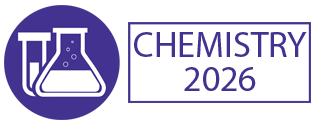Catalysis and Reaction Engineering
Chemical reaction engineering has made a significant contribution to the commercialization of laboratory-developed chemistry. Reaction engineering can be used to analyse reactions, identify rate-limiting processes, calculate overall rates, choose reactor configurations, and design and scale-up reactors. Insights into catalytic cycles and clues for optimizing catalyst systems can also be gained through reaction engineering. Chemical reactions are fundamental to the transformation of molecules from basic materials to useful products and energy. Many of these changes rely on catalysis, which leads to more efficient and environmentally friendly processing methods. Catalysts are complicated materials that must meet a number of criteria on a variety of scales in order to be used in catalytic processes. For this, an integrated approach is needed, one that considers sustainability and scalability while combining modelling and experiments, catalysis science, and chemical engineering.
- Digitalisation of chemistry
- Environment & climate
- New reaction development
- New synthesis technologies
- Pharmaceutical development
- Sustainable chemistry

Hossam A Gabbar
Ontario Tech University, Canada
Victor John Law
University College Dublin, Ireland
Alexander Bagaturyants
National Research Nuclear University MEPhI, Russian Federation
Sergey Suchkov
N.D. Zelinskii Institute for Organic Chemistry of the Russian Academy of Sciences, Russian Federation
Shree Niwas Chaturvedi
Centre for Aptitude Analysis and Talent Search, India
Pieter Samyn
SIRRIS, Belgium




Title : Advances in plasma-based radioactive waste treatment
Hossam A Gabbar, Ontario Tech University, Canada
Title : Unraveling the ultrastructure and functions of the neuronal membrane skeleton using super-resolution fluorescence microscopy
Zhou Ruobo, Djillali Liabes University of Sidi Bel Abbes, Algeria
Title : Solar box cooker dehydration, and relative humidity endpoint detection, of lamiaceae culinary leaves on the island of Crete
Victor John Law, University College Dublin, Ireland
Title : Nutrient and heavy metal loads from the Ribeiras to Coastal zones: A land-ocean continuum perspective in Madeira Island
Aracelis Del Carmen Narayan Rajnauth, University of Porto, Portugal
Title : Prospective polyoxometalate-based covalent organic framework heterogeneous catalysts
Arash Ebrahimi, Comenius University Bratislava, Slovenia
Title : Eliminating implant failure in humans with nano chemistry: 30,000 cases and counting
Thomas J Webster, Brown University, United States